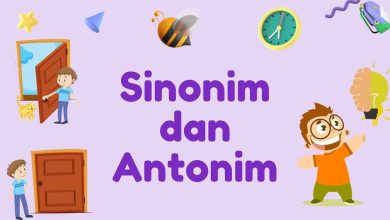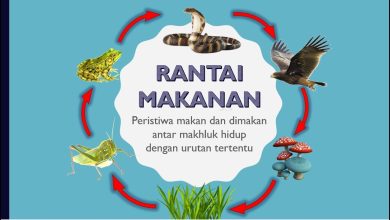Pendidikan
3 weeks ago
Berikut Ini yang Termasuk Komponen Dasar Kebugaran Fisik Yaitu?
Berikut ini yang termasuk komponen dasar kebugaran fisik yaitu? Merupakan salah satu pertanyaan yang muncul…
Jurnal
March 5, 2024
Pengertian dan Contoh Surat Niaga dengan Cara Penulisannya Lengkap
contoh Surat Niaga dengan cara penulisanya – Surat Niaga adalah surat yang di gunakan oleh…
Jurnal
March 5, 2024
Pengertian dan Contoh Sinonim dan Antonim Secara Lengkap
Pengertian dan Contoh sinonim dan antonim secara lengkap – Mendengar kata sinonim mungkin tidak pada…
Jurnal
March 5, 2024
Pengertian dan Contoh Rantai Makanan
Pengertian dan contoh Rantai Makanan – Dalam sebuah hubungan ekosistem baik darat maupun laut saling…
Jurnal
March 5, 2024
Pengertian dan Contoh kalimat Majemuk setara, Rapatan, bertingkat dan campuran
Pengertian dan Contoh kalimat Majemuk – Dalam Bahasa indonesia sering kita temui istilah kata,dan jenis…
Jurnal
March 5, 2024
Pengertian dan Contoh Kalimat Deklaratif
pengertian dan contoh kalimat deklaratif – Jenis kalimat deklaratif sering di kenal dengan kalimat berita.…
Jurnal
March 5, 2024
Pengertian dan contoh fakta dan opini secara lengkap
Contoh Opini 1. Lari sejauh 100 meter telah melelahkan 2. Makanan itu bakal terasa lebih…
Jurnal
March 5, 2024
Macam-Macam Jaringan Pada hewan
sebelum kita membahas macam macam jaringan pada hewan, tentunya kalian sudah tau apa saja yang…
Jurnal
March 5, 2024
Pengertian Dan Contoh Kalimat Efektif secara lengkap
Pengertian Dan Contoh Kalimat Efektif secara lengkap – Tujuan utama dalam mempelajari sebuah bahasa adalah…
Jurnal
March 5, 2024
Senyawa Organik dan Anorganik dalam Kimia, Apa Bedanya?
Senyawa organik dan anorganik sering muncul jika menyangkut zat kimia. Keduanya adalah molekul yang terkait…


















